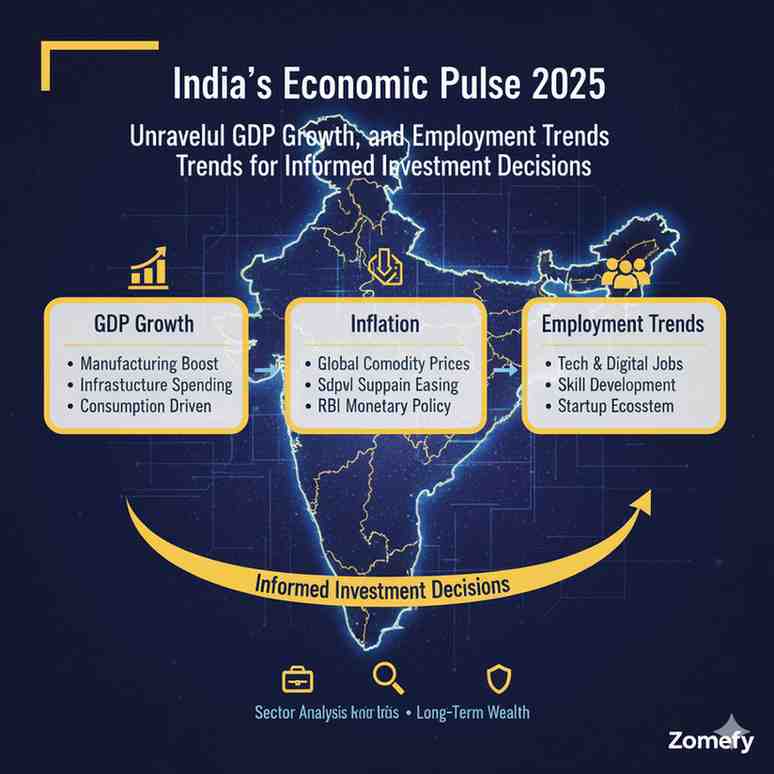India’s 2025 Wealth Planning Revolution: Navigating Post-PF Reforms, NPS Updates, and Tax-Efficient Retirement Strategies for Retail Investors
India’s wealth planning landscape is undergoing a transformation in 2025, driven by sweeping regulatory reforms, evolving retirement frameworks, and the urgent need for tax-efficient strategies.
India’s 2025 Wealth Planning Revolution: Navigating Post-PF Reforms, NPS Updates, and Tax-Efficient Retirement Strategies for Retail Investors
What You Can Do Next
- Read the full article for complete insights
- Save for later reference
- Share with others learning about this topic
Image not available
India’s wealth planning landscape is undergoing a transformation in 2025, driven by sweeping regulatory reforms, evolving retirement frameworks, and the urgent need for tax-efficient strategies. The recent changes to the Employees’ Provident Fund (EPF) and National Pension System (NPS) have redefined the retirement planning journey for millions of retail investors. At the same time, the growing complexity of tax laws, the rise of digital wealth management platforms, and the increasing importance of global diversification are reshaping how families and individuals approach their financial futures. For retail investors, understanding these shifts is no longer optional—it’s essential. This article provides a comprehensive guide to navigating the post-PF reforms, leveraging the latest NPS updates, and implementing practical, tax-efficient retirement strategies. We’ll break down the new rules, compare investment options, and offer actionable insights tailored to the Indian context, ensuring you’re equipped to make informed decisions in this dynamic environment.
Understanding the 2025 EPF and NPS Reforms
The Employees’ Provident Fund (EPF) and National Pension System (NPS) have undergone significant changes in 2025, aimed at enhancing flexibility, improving returns, and simplifying compliance for retail investors. The EPF reforms now allow for partial withdrawals for specific life events such as higher education, marriage, and medical emergencies, with relaxed documentation requirements. The NPS has introduced a new tiered structure, making it easier for investors to choose between conservative and aggressive investment options based on their risk profile and retirement goals.
The government has also increased the tax-free withdrawal limit for NPS to ₹5 lakh per year (up from ₹2.5 lakh), providing greater liquidity for retirees. Additionally, the NPS now offers a wider range of asset classes, including international equities and alternative investments, giving investors more control over their portfolio allocation.
For retail investors, these reforms mean greater flexibility in managing retirement savings, but also require a deeper understanding of the new rules and options. The table below compares the key features of the EPF and NPS as of 2025.
EPF vs NPS: Key Features and Changes
Feature | EPF (2025) | NPS (2025) |
|---|---|---|
| Contribution Limit | 12% of basic salary (employee + employer) | ₹1.5 lakh per year (Tier I), no limit (Tier II) |
| Tax-Free Withdrawal | Full withdrawal after 5 years of service | ₹5 lakh per year (Tier I), 60% lump sum, 40% annuity |
| Investment Options | Fixed interest rate (8.25% in 2025) | Equity, debt, international, alternative assets |
| Partial Withdrawal | Allowed for specific life events | Not allowed (Tier I), flexible (Tier II) |
| Portability | Universal Account Number (UAN) | Same across employers |
The EPF remains a stable, low-risk option for retirement savings, while the NPS offers greater flexibility and potential for higher returns. Retail investors should consider their risk tolerance, investment horizon, and liquidity needs when choosing between these schemes.
Tax-Efficient Retirement Strategies for 2025
In 2025, tax-efficient retirement planning is more important than ever, with new regulations and investment options available to Indian retail investors. The key to maximizing retirement savings is to leverage tax-advantaged accounts, optimize asset allocation, and plan for both short-term and long-term tax liabilities.
The table below compares the tax treatment of major retirement investment options in India as of 2025.
Tax Treatment of Retirement Investment Options
Investment Option | Tax on Contributions | Tax on Withdrawals | Tax on Returns |
|---|---|---|---|
| EPF | Deductible under Section 80C | Tax-free after 5 years | Tax-free |
| NPS | Deductible under Section 80C | ₹5 lakh per year tax-free, balance taxable | Tax-free |
| PPF | Deductible under Section 80C | Tax-free after 15 years | Tax-free |
| ELSS | Deductible under Section 80C | Tax-free after 3 years | Tax-free |
| Traditional Pension Plans | Not deductible | Taxable | Taxable |
Retail investors should prioritize tax-advantaged accounts like EPF, NPS, PPF, and ELSS for retirement savings. For those seeking higher returns, a mix of equity and debt instruments can be considered, but with careful attention to tax implications.
Actionable Investment Strategies for Retail Investors
For retail investors in 2025, the key to successful wealth planning is a combination of disciplined saving, strategic asset allocation, and regular portfolio review. The following strategies are tailored to the Indian market context and regulatory environment.
The table below provides a sample asset allocation for a retail investor in 2025.
Sample Asset Allocation for Retail Investors
Asset Class | Allocation (%) | Reason |
|---|---|---|
| Equities | 40 | Long-term growth |
| Debt | 30 | Stability and income |
| Gold | 10 | Hedge against inflation |
| Real Estate | 10 | Appreciation and rental income |
| Cash/Emergency Fund | 10 | Liquidity |
Retail investors should adjust the allocation based on their risk tolerance, investment horizon, and financial goals. Regular monitoring and rebalancing are essential to maintain the desired risk-return profile.
Risk Considerations and Future Outlook
While the 2025 reforms and new investment options offer significant opportunities for retail investors, they also come with risks that must be carefully managed. Market volatility, regulatory changes, and personal financial circumstances can all impact the effectiveness of wealth planning strategies.
The table below summarizes the key risks and mitigation strategies for retail investors in 2025.
Key Risks and Mitigation Strategies
Risk | Mitigation Strategy |
|---|---|
| Market Volatility | Diversify across asset classes and geographies |
| Regulatory Changes | Stay informed and review strategies regularly |
| Personal Financial Circumstances | Maintain an emergency fund and flexible investment options |
| Tax Liabilities | Plan for tax-efficient withdrawals and optimize asset allocation |
Retail investors should remain vigilant and proactive in managing these risks. Regular consultation with financial advisors and staying updated on regulatory developments are essential for long-term success.
Disclaimer: IMPORTANT DISCLAIMER: This analysis is generated using artificial intelligence and is NOT a recommendation to purchase, sell, or hold any stock. This analysis is for informational and educational purposes only. Past performance does not guarantee future results. Please consult with a qualified financial advisor before making any investment decisions. The author and platform are not responsible for any investment losses.
Continue Your Investment Journey
Discover more insights that match your interests

RBI’s 2025 Monetary Policy Impact: How Repo Rate Adjustments and Liquidity Measures Are Shaping India’s Investment Landscape
The Reserve Bank of India's (RBI) monetary policy in 2025 is a pivotal force shaping India's economic and investment landscape.

Deeptech Unicorns 2025: How Defence, Robotics, and Energy Startups Are Reshaping Investment Valuations
India's startup ecosystem is undergoing a profound transformation, with deep tech—encompassing defence, robotics, and energy—emerging as a key driver of innovation and investment.

ESG Investing in India 2025: Emerging Trends, Green Bonds, and Sustainable Wealth Creation Strategies for Retail Investors
ESG (Environmental, Social, and Governance) investing in India is rapidly evolving as a mainstream strategy for wealth creation, driven by increasing awareness, regulatory mandates, and global sust...

India's Economic Pulse 2025: Unraveling GDP Growth, Inflation, and Employment Trends for Informed Investment Decisions
India's economy in 2025 stands at a pivotal juncture, characterized by robust GDP growth, moderated inflation, and evolving employment trends that collectively shape the investment landscape.
Explore More Insights
Continue your financial education journey
